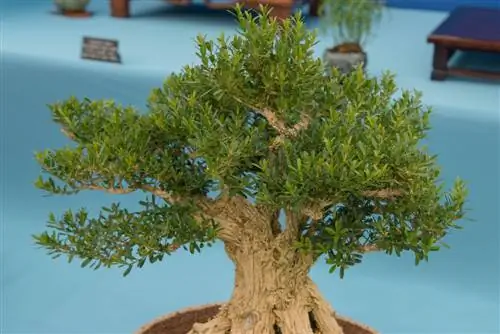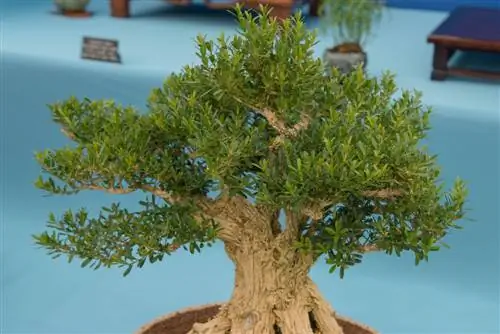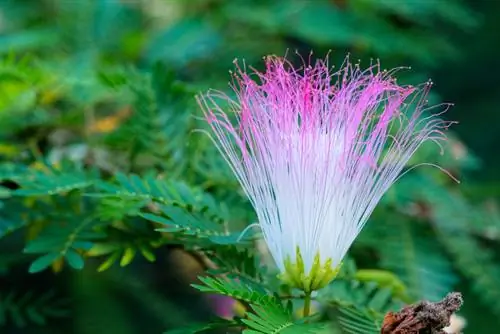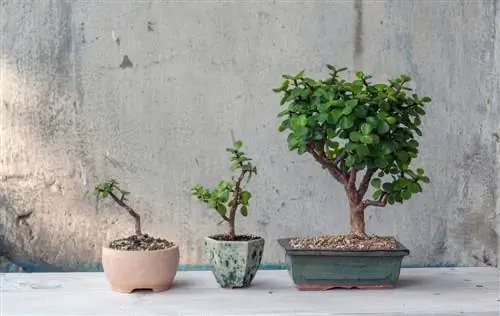- Author admin [email protected].
- Public 2023-12-16 16:46.
- Last modified 2025-01-23 11:22.
Few trees allow as many design options as Buxus sempervirens. There are no limits to imagination or implementation and beginners are guaranteed to enjoy the art of bonsai if they start with a boxwood. This allows artistic animal shapes or simple geometric shapes.

How to care for a boxwood bonsai?
A boxwood bonsai needs a suitable outdoor location with sufficient daylight, evenly moist soil, regular topiary and fertilization from spring to autumn. Wiring is only possible to a limited extent as the wood is hard and susceptible to breakage.
Shaping Bonsai
The boxwood proves to be completely cut-tolerant and also tolerates intensive cuts right into the old wood. For this reason, the species is popular for bonsai design because it forgives beginners incorrect pruning interventions.
Topiaries
Boxwoods are considered strong-growing. They continually sprout and become bushy. Once you have shaped the bonsai, regular pruning is necessary during the growing season from May to September. The procedures in which you remove the fresh shoots take place every six to eight weeks. Roots are only shortened when repotting, so that a balanced relationship between crown and root ball is created.
Wiring
Buxus sempervirens develops comparatively hard wood, which is why it is only partially suitable for shaping with wires. Wired branches tend to break quickly. However, careful bracing is possible if you want to correct individual branches.
Claims
The goal in the art of bonsai is to grow as slowly as possible, so that the plants develop beautifully and strongly. However, like their normal-sized relatives, the mini trees have basic needs that must be met with the right care.
Location
Boxwood bonsais are suitable for outdoors. In daylight, the trees develop the energy they need to maintain their functions and grow he althy. Outdoor conditions ensure good growth in thickness, so that a strong trunk is formed. Rain and wind harden the leaves. This makes them more robust against pathogens and pests.
Water
The water requirement for a boxwood bonsai is above average and its roots must not be dry. They die quickly if drought persists. It is therefore important that you keep the substrate evenly moist. Rainstorms briefly increase the humidity and ensure that dust is washed off the leaves. If it doesn't rain for a long time, you can create the perfect conditions by watering correctly.
The optimal irrigation:
- water the entire plant with water
- Use a fine spray so that the substrate is not washed away
- Watering until soil is completely saturated
Tip
If the tree has dried out, you can place the bowl in a water bath. When no more air bubbles appear, the root ball is completely saturated with water.
Nutrients
From spring to autumn, boxwoods require regular fertilization with organic products in spherical form. Alternatively, spread or liquid fertilizers are recommended, which are administered according to the instructions on the packaging. If the trees are in bloom, stop the nutrient supply. For newly repotted trees, you can forego fertilizing until next spring.






